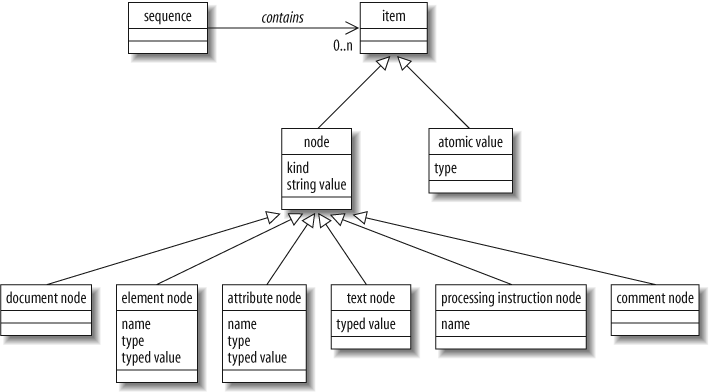The XQuery Data Model
XQuery has a data model that is used to define formally all the values used within queries, including those from the input document(s), those in the results, and any intermediate values. The XQuery data model is officially known as the XQuery 1.0 and XPath 2.0 Data Model, or XDM. It is not simply the same as the Infoset (the W3C model for XML documents) because it has to support values that are not complete XML documents, such as sequences of elements (without a single outermost element) and atomic values.
Understanding the XQuery data model is analogous to understanding tables, columns, and rows when learning SQL. It describes the structure of both the inputs and outputs of the query. It is not necessary to become an expert on the intricacies of the data model to write XML queries, but it is essential to understand the basic components:
- Node
An XML construct such as an element or attribute
- Atomic value
A simple data value with no markup associated with it
- Item
A generic term that refers to either a node or an atomic value
- Sequence
An ordered list of zero, one, or more items
The relationship among these components is depicted in Figure 2-2.

Figure 2-2. Basic components of the data model
Nodes
Nodes are used to represent XML constructs such as elements and attributes. Nodes are returned by many expressions, including path expressions and constructors. For example, ...
Get XQuery now with the O’Reilly learning platform.
O’Reilly members experience books, live events, courses curated by job role, and more from O’Reilly and nearly 200 top publishers.

